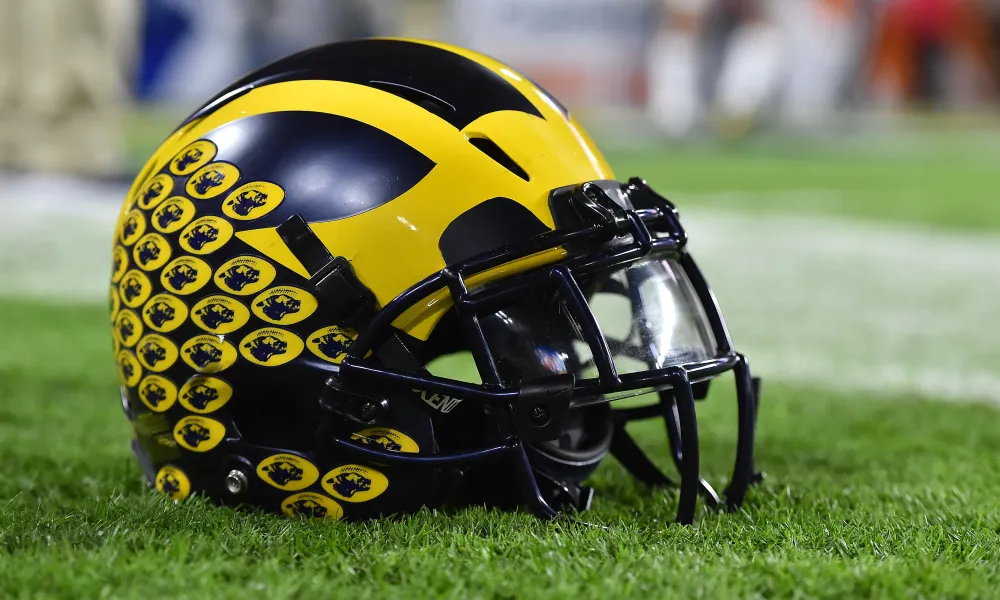
Michigan swiftly transitioned from the Jim Harbaugh era, taking only two days after Harbaugh joined the Los Angeles Chargers to appoint their ex-offensive coordinator, Sherrone Moore, as the new head coach. Instead of conducting an extensive search for an experienced head coach, the Wolverines opted to elevate the 37-year-old from their own ranks. This move prompts the inquiry: what credentials does Moore possess to now helm a program aiming for championship success?
Moore has slowly built a top-notch resume
Moore’s rise in the coaching realm has been a gradual process rather than an overnight phenomenon. Hailing from Kansas, he commenced his coaching journey as a graduate assistant at Louisville in 2009 while pursuing a master’s degree in sports administration. During this period, he gained exposure to a successful program, with the Cardinals participating in two bowl games.
Upon completing his master’s degree in 2011, Moore advanced to the role of tight ends coach. Following the 2013 season, he ventured from the Power 5 to Central Michigan, a member of the MAC conference. Despite the smaller program stature, Moore successfully nurtured Ben McCord and Tyler Conklin into tight ends with NFL potential. Presently, they play for the Detroit Lions and New York Jets, respectively, with Conklin boasting three consecutive seasons as a starter.
In 2018, Moore brought his skills to Ann Arbor, initially serving as the tight ends coach before transitioning to the offensive line. With a background as a former lineman, Moore was well-equipped to guide players in the trenches, having played guard for Oklahoma from 2006 to 2007, contributing to two Big 12 titles.
Under Moore’s leadership, the Michigan offensive line excelled, particularly in the impressive run game showcased in running back Blake Corum’s historic 2023 season, where he scored an unprecedented 28 total touchdowns. During this period, Moore adeptly managed dual responsibilities, overseeing the offensive line while also coordinating the entire offense.
Furthermore, Moore demonstrated his coaching prowess when he temporarily took over as head coach during Harbaugh’s NCAA suspension last year. Securing victories against Penn State and Ohio State, Moore gained national recognition, proving his ability to compete with top coaches like Ryan Day.
What will Michigan look like under Moore’s guidance?
Moore’s strategic decisions in the final moments of the Penn State triumph could serve as a preview of the Wolverines’ future direction. In that crucial period, he opted for an impressive 32 consecutive run plays, effectively dominating the Nittany Lions in the trenches and securing a decisive 24-15 victory.
Although the offense may not replicate such an extended reliance on running plays in every game, Moore’s coaching history indicates a continued emphasis on the running game. While acknowledging the possibility of delegating playcalling duties to the offensive coordinator, Moore expressed a commitment to ensuring a seamless transition and maintaining program continuity as his primary objective.
During his introductory press conference, Moore highlighted his initial focus on the existing players and staff, emphasizing a methodical approach to building from the foundation already in place. As program stars like Corum and quarterback JJ McCarthy declare for the NFL draft, maintaining a consistent run-first offensive philosophy becomes crucial to avoid overwhelming the team with abrupt changes.
Considering the arrival of promising four-star recruits such as Andrew Sprague (offensive tackle), Jadyn Davis (quarterback), and Jordan Marshall (running back), the Wolverines appear well-positioned to sustain success in the trenches. This strength in the offensive line could, in turn, create opportunities for effective play-action, especially with the potential of Davis at quarterback. The strategic integration of new talent into the existing framework will be a key aspect of Moore’s task as he navigates the evolving landscape of the team.
Furthermore, the addition of three-star tailback Micah Ka’apana brings depth to the running back position, offering a change of pace when Jordan Marshall needs a break. Football scout EJ Holland at On3.com highlighted Ka’apana’s suitability as a complement to Marshall, noting Marshall’s bruiser style between the tackles, resembling Blake Corum, and Ka’apana’s traits aligning with Donovan Edwards. This dynamic duo has the potential to inject excitement into the offense, with Marshall poised for a bell cow role as a true freshman.
While there will be changes in personnel on both sides of the ball, the expectation is that coaching philosophies and playcalling will remain consistent as Moore navigates his leadership role. Coming off three Big Ten titles and a national championship, the Wolverines’ fanbase anticipates the team to sustain its winning ways.
Reflecting on Harbaugh’s successful tenure, Moore recognizes the need to forge his own coaching identity. Despite observing Harbaugh’s coaching style for the past six years, Moore acknowledges that he cannot replicate Harbaugh but intends to be true to himself as he gains more experience. As Moore takes the helm, he is poised to carve out his own path and imprint his unique coaching identity on the Michigan football program.
Leave a Reply